This week, let’s look at another real-world example of infrastructure failure that highlights the importance of resilience and business continuity management (BCM). This incident occurred just last week at Heathrow Airport.
So, what happened at Heathrow Airport?
On March 20, 2025, a fire at the North Hyde electrical substation caused a large-scale power outage at Heathrow Airport. The disruption affected more than 200,000 passengers and resulted in over 1,300 flight cancellations and diversions. More than 10 fire trucks and over 7 hours were required to bring the fire under control. The airport was forced to halt operations for nearly a day, causing an estimated financial impact of £60–70 million for the airlines.

What Caused the Incident?
Heathrow Airport receives electricity from multiple substations, with Heathrow North being one of the main supply points. This substation, in turn, is fed by the North Hyde substation (275/66kV). The problem occurred when one of the main transformers at the North Hyde substation caught fire, which then spread and damaged the surrounding area, including the adjacent transformers and associated backup equipment.
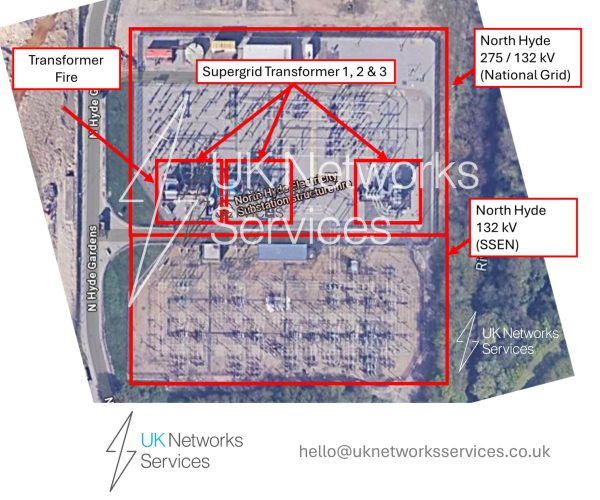
Analysis from various sources and experts identified several root causes such as:
The North Hyde substation is relatively old, having been designed in the 1960s. As a result, it likely lacks modern fire protection design features and contingency measures to maintain power supply in the event of multiple transformer failures (N-2 scenario). In addition, backup high-voltage transmission lines were installed in the same area as the main high-voltage lines, it is expected that they were damaged simultaneously during the incident.
The fire suppression system (water deluge system) installed on the transformers either failed to operate properly or was insufficiently designed, allowing the fire to spread extensively and there were no fire-resistant walls to contain the spread of fire.
Although Heathrow Airport receives power from multiple substations, switching between power sources for its highly complex systems takes time. While the airport has backup power systems in place for safety-critical functions, other key operational systems such as the baggage and conveyor systems, fuel supply systems, and even air bridges do not have backup power. This ultimately led to significant operational disruptions.
Lessons learned from this incident
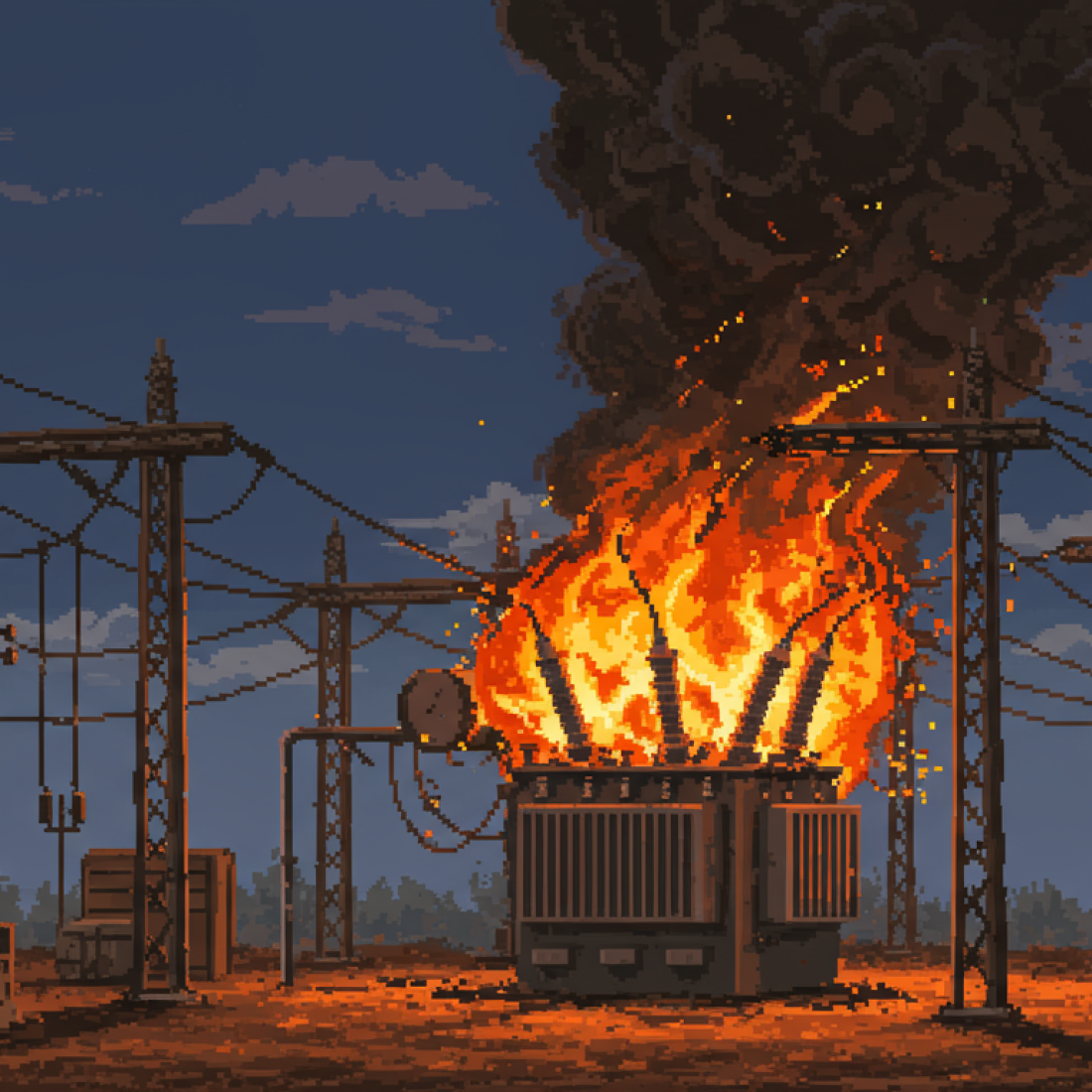
Business continuity planning and resilience are critical.
Unexpected disruptions can happen at any time. That’s why business continuity planning, identifying the level of dependency on critical resources, designing with redundancy in mind, and regularly testing both plans and key protection systems are all essential.
Fire protection system design
The main cause of damage in this incident was clearly the fire in the power transformer, which contained a massive amount of fuel, over 5,000 gallons (25,000 liters) of oil, leading to widespread destruction. In fact, substation designs are required to follow fire protection standards outlined in NFPA 850* and FM Global Loss Prevention Data Sheets 5-4 and 5-25. This article highlights some key design requirements from these standards as follows:
Exposure Protection for Outdoor Transformers and Other Equipment
FMDS 5-4 recommends a minimum separation distance per table 8 between adjacent transformers

Where the separation distances in Table 8 cannot be met, provide 2-hour fire-rated barriers between transformers. Extend barriers 1 ft (0.3 m) vertically and 2 ft (0.6 m) horizontally beyond the width of the transformer and cooling radiators, or to the edge of the containment area, whichever is greater.
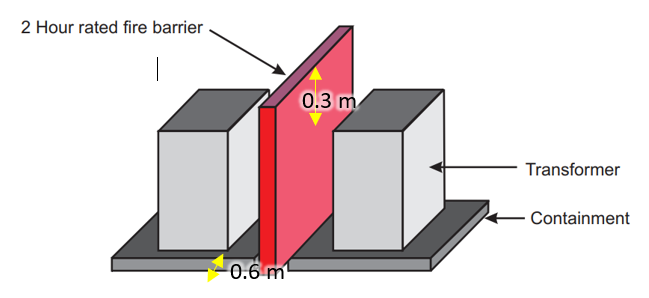
In addition, the design of spill containment systems is critical in limiting damage from leaks and fires. Both NFPA and FM Global standard recommend designing containment systems in accordance with IEEE STD 980. The design principles from both standards also emphasize considering the following additional factors:
-
- The volume of oil contained in the transformer
- The amount of water from fire hoses and sprinkler systems that will be operated
- Oil containment dike or other measures to safely divert oil away from buildings and nearby transformers (only NFPA)
Lastly, the design of an adequate automatic fire protection system in accordance with international standards, such as NFPA 15 — Standard for Water Spray Fixed Systems for Fire Protection — or FMDS 4-1N, Water Spray Fixed Systems, and Data Sheet 2-0, Installation of Sprinkler Systems, is also essential. These standards specify various design requirements, which will not all be detailed in this article to avoid making it overly lengthy

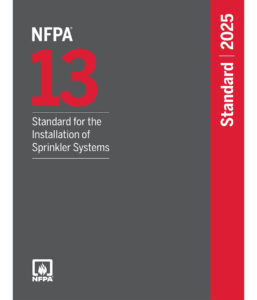
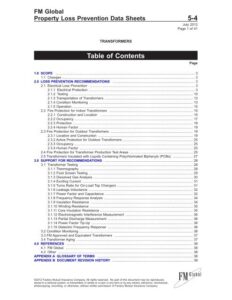
However, if a water spray system is installed, both standards specify the required discharge density for transformer protection at 0.3 gpm/sq.ft (FMDS) and 0.25 gpm/sq.ft (NFPA). For the surrounding area, the required discharge density is 0.2 gpm/sq.ft (FMDS) and 0.15 gpm/sq.ft (NFPA). The water supply must also account for the system’s total demand as well as a hose stream demand of 250 gpm for a duration of one hour. It can be seen that both standards follow the same design principles, with FM Global applying more stringent requirements.

Conclusion
From the Heathrow Airport case study, we can see that beyond the importance of having a business continuity management system (BCMS) and a business continuity plan (BCP), the process of exercising and validating those plans and related systems is equally critical.
In this case, if we look back at the airport’s main power supply station, a critical energy dependency, and apply engineering-based risk assessment, it clearly reveals design vulnerability in the fire protection system design. These vulnerabilities could create a single point of failure, even if the system is designed with N+1 redundancy in mind.

Is your organization ready to handle risks that could cause serious disruptions?
In the end, risks and disruptions can happen at any time. Proper planning, thorough risk assessment, and regular testing are what truly help identify and reduce risks before they impact operations.
Contact us today if you need a risk assessment or a business continuity consulting partner. At InterRisk, we have certified professional engineers with expertise in various risk areas from fire protection and machinery breakdown to natural disaster risks and even road safety. Let us help you turn Risks in your organization into Resilience
Reference
- https://www.theguardian.com/uk-news/2025/mar/23/national-grid-boss-says-there-was-power-to-run-heathrow-during-shutdown?utm_source=chatgpt.com
- https://apnews.com/article/heathrow-reopens-fire-disruption-airlines-delays-eeac11179fe495c04cbb331128149d3b
- Aerials show site of fire that caused 18-hour shutdown of Heathrow Airport | AP News
- https://www.linkedin.com/feed/update/urn:li:activity:7308776827215306752/ (Simon Gallagher, UK Network services)
- FM Property Loss Prevention Data Sheets 5-25
- FM Property Loss Prevention Data Sheets 5-4
- NFPA 850, Recommended Practice for Fire Protection for Electric Generating Plants and High Voltage Direct Current Converter Stations, 2020 Edition
- https://www.basicconcepts.com/secondary-containment-solutions-fiberglass-containment-wall-with-geomembrane-liner

